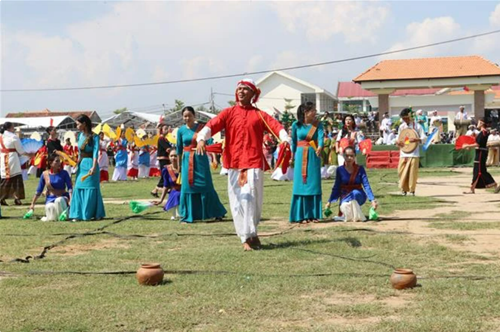The festival began with traditional rituals, including the procession of Goddess Po Ina Nagar, who taught the Cham people to grow rice, weave cloth, and raise livestock, helping them have a prosperous life.
    |
 |
|
A performance at this year's festival |
It was followed by spectacular art performances by Cham men and women in colorful traditional attire. The audience was treated to graceful fan dances accompanied by the rhythmic beats of the Paranung drums and the melodic tunes of the Saranai flutes. Everything blended together, creating a lively and captivating festive atmosphere that enchants everyone.
Visitors to the event, which lasts until October 3, can witness rituals such as the genie's costume procession, the opening of tower gates, and genie statue bathing. They also have a chance to enjoy folk games, pottery art and sports competitions and fashion shows.
The Kate Festival, one of the most important cultural events of the Cham ethnic people in Binh Thuan, which takes place from the end of the sixth month to the middle of the seventh month in Cham calendar, is a unique tourism product helping the south central province to draw visitors.
The Kate Festival is a unique traditional festival of Cham followers of Brahmanism in Binh Thuan, which is home to second largest Cham community in Vietnam after neighboring Ninh Thuan province.
It aims to show respect to gods and pray for favorable weather, bumper harvests, marital harmony, and the health and protection of society.
Taking place in the seventh month of the Cham calendar, Kate is the biggest festival in the year of the Cham Brahman people. It reminds the ethnic Brahman community of their ancient gods and delivers wishes for bumper harvests and the growth of all beings.
There are more than 50,000 Cham Brahman people in Ninh Thuan, mainly in the districts of Ninh Phuoc, Thuan Nam, Thuan Bac and Ninh Hai, and Phan Rang - Thap Cham city.
In 2017, the "Kate Festival of Cham people in Ninh Thuan province" was officially recognized as a National Intangible Cultural Heritage.
Source: VNA